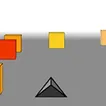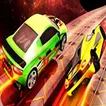



























































































































































































































































3D Games: The Thrilling Evolution of Three-Dimensional Gaming
The realm of 3D games has undergone a remarkable transformation, shaping the way we interact with digital worlds. The evolution of three-dimensional gaming is not just a technical progression; it’s a journey through imaginative spaces that have captivated players around the globe. With each leap in graphics processing and design software, game developers have been able to craft more complex and visually stunning environments. These immersive landscapes offer a sense of depth and realism that was once the stuff of science fiction.
The early days of 3D gaming were characterized by rudimentary shapes and simple textures, but even these laid the groundwork for the sophisticated experiences we enjoy today. As technology advanced, so did the ability to render detailed characters and intricate settings, allowing for more dynamic storytelling and gameplay. The introduction of hardware capable of handling higher polygon counts and advanced lighting techniques brought virtual worlds to life, making them more believable and engaging.
This evolution has also been about breaking barriers, not just in terms of graphics but in gameplay mechanics as well. The shift from two-dimensional side-scrollers to expansive 3D environments has given players unprecedented freedom to explore, interact, and become truly lost in the game worlds. The third dimension has added a layer of complexity to game design, challenging developers to think outside the traditional confines of the screen.
As we look to the future, the potential for 3D gaming seems limitless. With virtual and augmented reality pushing the boundaries even further, players can expect to be transported into game worlds that are more interactive and immersive than ever before. The thrilling evolution of three-dimensional gaming continues to redefine entertainment, proving that the only limit is the imagination of those who create and play.
3D Games for Free: Accessibility and the Changing Landscape of Gaming
The democratization of gaming has been significantly propelled by the advent of free 3D games. This trend has not only reshaped the landscape of gaming but has also made it more inclusive. High-quality 3D games, once the exclusive domain of those willing to invest in expensive software or hardware, are now readily accessible across various platforms at no cost. This shift has played a pivotal role in expanding the gaming community, inviting players from all walks of life to dive into rich, three-dimensional worlds.
The proliferation of powerful, open-source game engines and the rise of indie game developers have fueled this movement. Talented creators can now bring their visions to life without prohibitive costs, and share their games with a global audience. As a result, the barrier to entry for both developers and gamers has been lowered, fostering a more vibrant and diverse gaming ecosystem.
Moreover, the availability of free 3D games has encouraged experimentation and innovation within the industry. Developers are more inclined to take creative risks, knowing that they can reach players directly through digital distribution channels. This has led to a surge in unique and experimental game concepts that might not have found a platform in the traditional retail model.
The impact of free 3D gaming is also evident in the educational sphere, where such games are used as interactive learning tools. They provide an engaging way to develop skills such as strategic thinking, problem-solving, and hand-eye coordination. The accessibility of these games ensures that educational opportunities are not limited by socioeconomic status, contributing to a more equitable learning environment.
In essence, the rise of free 3D gaming has not only made immersive experiences more accessible but has also fostered a more inclusive and innovative gaming world. It’s a testament to how the digital age has transformed entertainment, making it a shared and dynamic experience for all.
3D Car Games: Speed, Strategy, and Simulation
The allure of 3D car games lies in their ability to offer a blend of speed, strategy, and simulation that captivates a wide range of gaming enthusiasts. These games simulate the thrills of high-speed racing and the intricacies of vehicle handling, delivering an adrenaline rush alongside a test of skill and precision. The genre’s appeal extends from casual gamers seeking a quick, exciting escape to simulation aficionados who relish in the detailed replication of real-world driving dynamics.
Technological innovations have been pivotal in driving the sub-genre forward. Advances in physics engines have enabled a more authentic representation of car behavior, from the grip of the tires on the tarmac to the impact of collisions. This attention to detail not only enhances the realism of the driving experience but also challenges players to refine their driving techniques in a way that mirrors real-life racing.
The immersive environments of 3D car games are another aspect that has benefited from technological progress. Richly detailed tracks and landscapes provide a sense of place and atmosphere, making each race not just a competition, but an exploration of virtual spaces. The interplay of light and shadow, the blur of speed, and the meticulous design of the cars themselves combine to create a visually captivating experience that draws players into the heart of the action.
Moreover, the strategic elements of these games, such as choosing the right vehicle, tuning it to perfection, and mastering the tracks, add depth to the gameplay. It’s not just about the rush of speed; it’s about making split-second decisions that can lead to victory or defeat.
In sum, 3D car games have carved a niche in the gaming world by offering a potent mix of speed, strategy, and simulation. They continue to evolve, driven by technological advancements and a passion for the art of racing, ensuring that they remain a staple in the digital entertainment landscape.
The Artistic Achievement in 3D Game Design
The artistic achievement in 3D game design is a testament to the creative prowess that goes into crafting virtual worlds. It’s where technology meets imagination, resulting in spaces that are not only lifelike but also brimming with originality. The visual splendor of these games can evoke a wide spectrum of emotions, from the awe of exploring a fantastical landscape to the tension of navigating a dystopian cityscape.
Designers employ a variety of techniques to breathe life into their creations. They sculpt intricate models, paint textures that mimic the real world or conjure the fantastical, and choreograph lighting to set the perfect mood. Each element is meticulously pieced together to build an aesthetically cohesive and engaging environment. The artistry involved in 3D game design is akin to that of a painter or a sculptor, but with the added challenge of creating art that is interactive and responsive to the player’s actions.
The creative process behind these games often involves a collaborative effort among artists, animators, and programmers, all striving to push the envelope of what’s visually and interactively possible. The result is a seamless blend of narrative and gameplay that can transport players to other realms. The visual mastery on display not only enhances the immersive experience but also solidifies the game’s identity and helps it stand out in a crowded market.
In essence, the artistic achievement in 3D game design is a crucial component that elevates the gaming experience. It’s not merely about the technical ability to render graphics but the vision to create worlds that captivate and resonate with players, long after they’ve put down the controller.